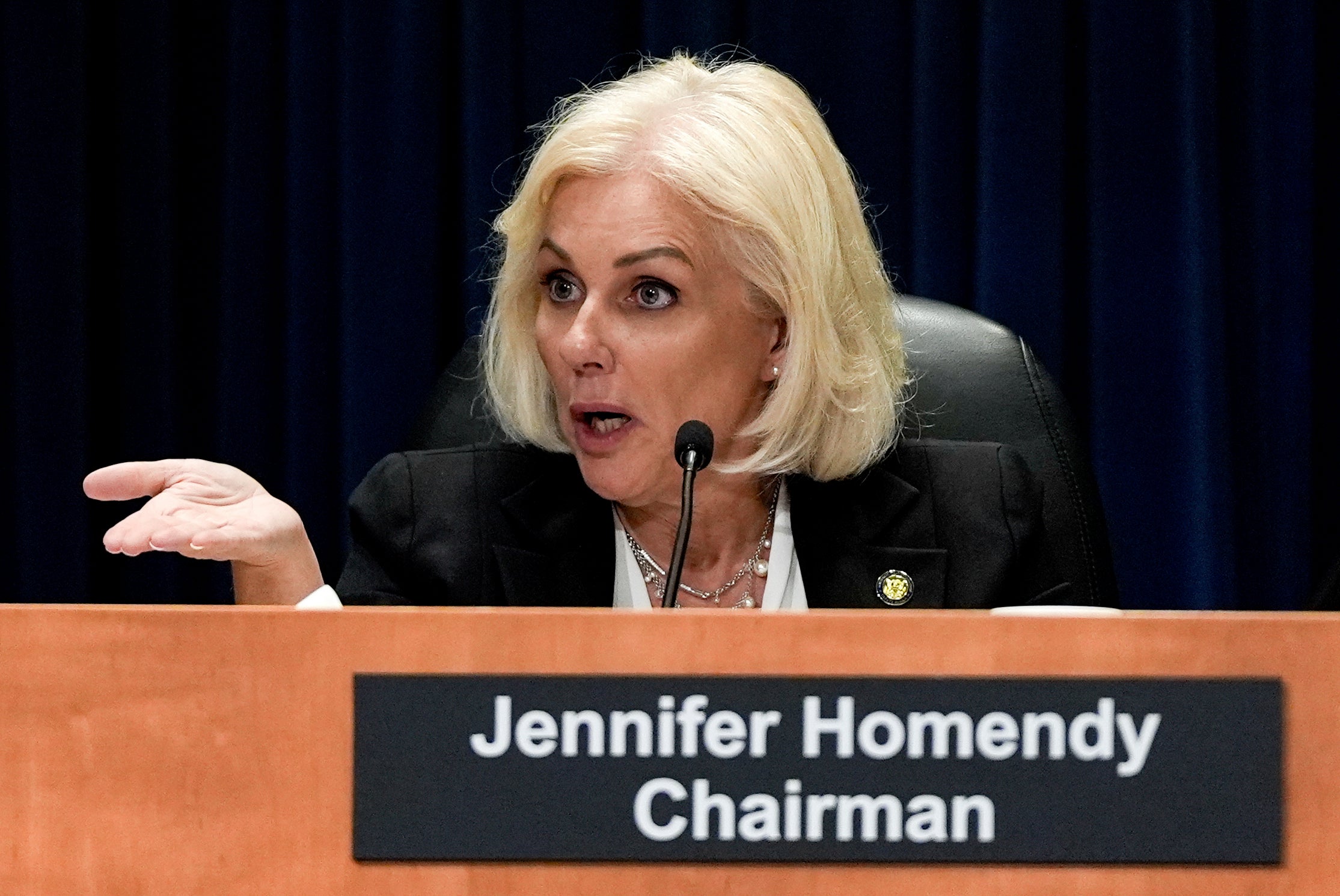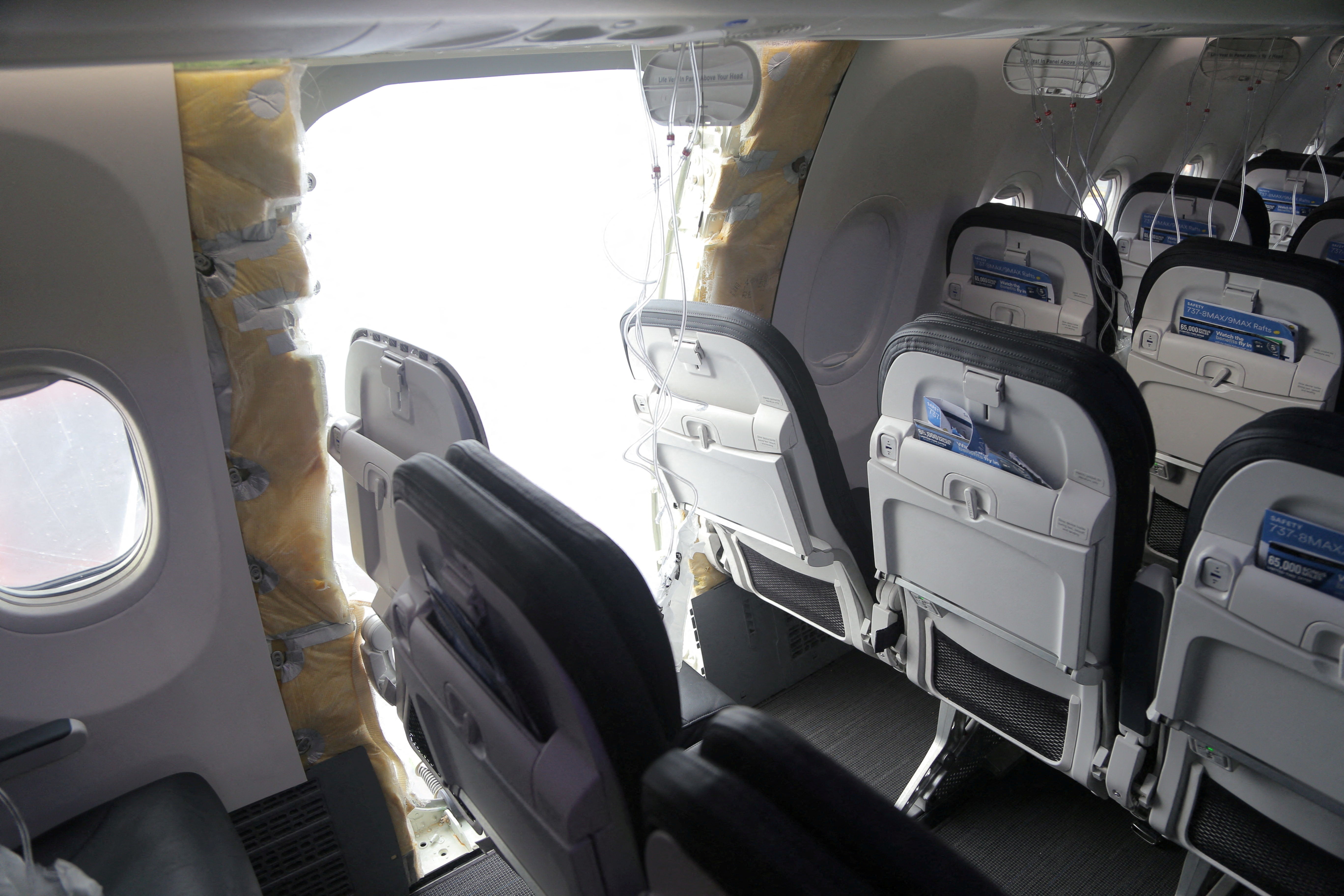Boeing suffered another reputational blow after the National Transportation Safety Board (NTSB) ruled that the company was at fault for a terrifying incident in January 2024, in which a 737 Max 9 lost its door plug panel six minutes after takeoff.
Alaska Airlines Flight 1282 was en route from Portland, Oregon, to southern California’s Ontario International Airport with 171 passengers onboard and had reached 16,000 feet, halfway towards its cruising altitude, when a loud “boom” was heard as the panel flew off.
The plane was travelling at 400mph at the time of the accident, which caused the passengers phones and other personal belongings to be sucked from the cabin by a roaring vacuum of air, which was so strong that one man even had the shirt torn from his back.
Seven passengers and a flight attendant were injured, but miraculously, no one was killed, and the pilots were ultimately able to safely land the plane back on the runway at Portland.
Presenting the NTSB’s final review of the case after 17 months of investigation, Chair Jennifer Homendy praised the cabin crew for saving the lives of all onboard but commented: “The crew shouldn’t have had to be heroes, because this accident never should have happened.”
The NTSB’s investigation concluded that four bolts securing the panel had been removed during maintenance work to replace damaged rivets and then not replaced. The NTSB blamed the company for the manufacturing and safety oversight, as well as the Federal Aviation Administration (FAA) for failing to spot the problem during a routine inspection.

The NTSB stated that Boeing factory staff had informed its investigators that they frequently felt rushed in their work and were sometimes asked to perform tasks for which they were not qualified, including opening and closing door plugs on the model in question.
In light of the Portland scare, Boeing and its collaborator, Spirit AeroSystems, have announced that they are redesigning the door panels on the 737 Max to ensure they remain sealed even without bolts. However, the FAA is not expected to approve the modification before next year, which is necessary to enable its wider rollout.
The NTSB encouraged the regulator to waive through the fix as soon as it is safe to do so and acknowledged that the company and the regulator had since improved staff training protocols, praising Boeing’s new CEO, Kelly Ortberg, for tightening safety standards since taking the job last summer.

Many of the board’s recommendations chime with those included in an earlier report issued by the Transportation Department’s Inspector General last year, which the FAA has said it is already working to implement.
Boeing stated in a press release: “We at Boeing regret this accident and continue to work on strengthening safety and quality across our operations.”
The FAA said in a statement of its own that it “has fundamentally changed how it oversees Boeing since the Alaska Airlines door-plug accident and we will continue this aggressive oversight to ensure Boeing fixes its systemic production-quality issues.
“We are actively monitoring Boeing’s performance and meet weekly with the company to review its progress and any challenges it’s facing in implementing necessary changes.”
The Max 737 has been the source of persistent troubles for Boeing since two of the jets crashed, one in Indonesia in 2018 and another in Ethiopia in 2019, killing 346 people in total.
The company again made unwanted headlines earlier this month when one of its 787s, flown by Air India, crashed shortly after takeoff and killed at least 270 people. However, no technical faults have yet been found in the investigation into that tragedy, and the model involved has a much stronger safety record.

 4 hours ago
3
4 hours ago
3










